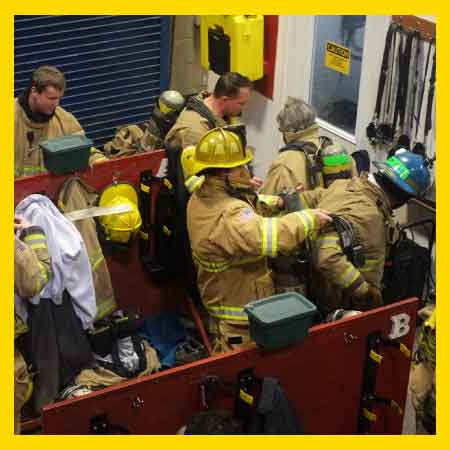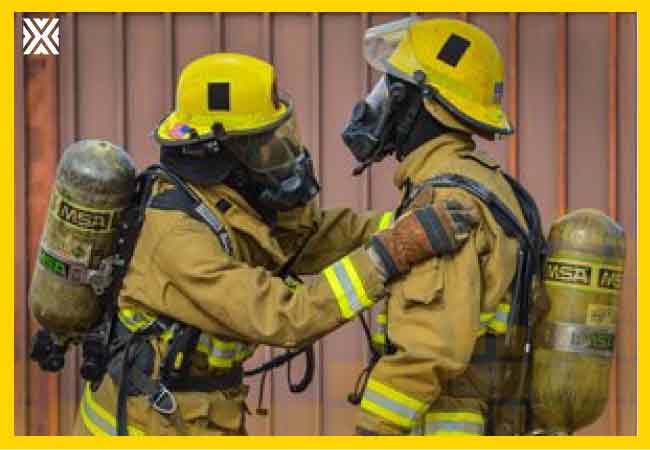Currency
May 25, 2019


Last winter, NASA spent a lot of time and energy hyping an upcoming event in space. It planned to conduct the first-ever spacewalk involving two women from the International Space Station. Women have walked in space before many times but have always been paired with men. This would be the first time it would just be two women out there. NASA made a point of noting that the event would take place in March – Women’s History Month.
Then shortly before it was set to occur, the historic spacewalk was canceled. The reason: They did not have enough spacesuits available to fit two women.
This turn of events struck a chord with many firefighters who have spent years trying to get protective gear that really fits them. Women are disproportionally affected, but men are also impacted when fire departments and gear manufacturers take a “one-size-fits-all” attitude about emergency gear.
The problem with ill-fitting gear
According to a recently published study from Brighton University in the United Kingdom, up to 75% of women firefighters in the United States and Canada reported that they did not always have access to full protective gear that properly fit them. Women in the UK reported only slightly better numbers.
Turnout gear, which is often custom made, is typically not the biggest problem. But gloves, boots, specialized gear for things like wildland or hazmat – these things can cause more than just inconvenience; they can be a significant safety hazard as well.
When I first became a firefighter, the generic gloves I was given were so unwieldy that I had to take them off for anything that required manual dexterity. And I had to wear three pairs of socks just to keep my boots on my feet.
I was not alone in these issues back then. Other women also suffered with ill-fitting gear, but the person I knew who was most affected by our interchangeable, one-sized air masks was a man who had a long, thin face. He routinely lost a seal on his mask and had to deal with free-flow issues that caused too-rapid use of air and visibility problems when in a hazardous environment.
Asking for help in dealing with these problems is often not productive. Some departments see gear fit as a personal problem, which has led more than one firefighter to buy their own properly fitting gear. Other departments are sympathetic to the issue, but say that remedies are difficult to provide due to lack of equipment for sale in sizes outside the mainstream.
These problems do not only affect firefighters. At least one large urban police department had women wearing ill-fitting and possibly ineffective ballistic vests for years before a solution was found. The women didn’t want to seem demanding or draw attention to themselves, so they made do with what they had. Only when they got together and spoke up were properly fitting vests acquired.
It’s true that women comprise only around 6% of the fire service, and some of them do not have problems with gear fit. That leaves those who do have issues feeling isolated and without advocacy.
Allowing this situation to persist is bad for the emergency services in several ways. Obviously, for people to effectively do their jobs, they need gear that fits and does not create a hazard in itself. Poorly fitting gear can cause trip hazards, bad manual dexterity, potential hazardous exposures and too-rapid air use, among other problems. Those with poorly fitting gear may take the chance to not use their safety gear at all rather than be hindered by it.
But there is another negative outcome for emergency services agencies that do not make the effort to provide gear to fit. When the provision of properly fitting gear for everyone seems to be too much trouble, that sends a clear message about who is valued and who is not.
How to solve the gear-fit problem
What can departments do to remedy this problem? The most important action is to be vocal with gear manufacturers about what kinds of gear they need and expect to have. Emergency gear manufacturers are in the business of supply and demand – and also in edging out their competition. If fire departments as consumers demand that suppliers provide boots, gloves and other gear in smaller sizes, someone will. But the need must be expressed.
Likewise, firefighters and other first responders must step up and identify the problem and not just pretend everything is OK when it isn’t. It’s hard to want to stand out in any way as a firefighter, especially when that means saying that you need different-sized gear than what most others use. It can be helpful if departments ask of each member: “Does your gear fit you well? If not, what needs to change?” rather than force the individual to make a complaint.
A fundamental requirement
Properly fitting protective gear is the most basic requirement for first responders to be effective in their jobs. It is in every department’s best interests to be sure that they are providing gear that fits, and if there is a problem, working with members to make sure they have the tools they need to do their jobs.









